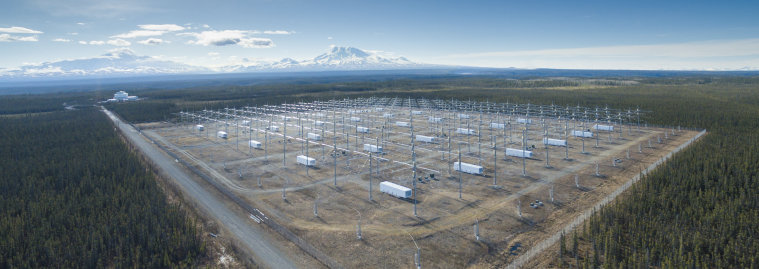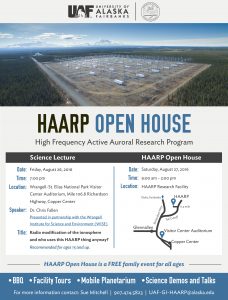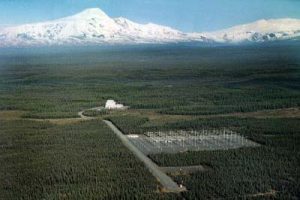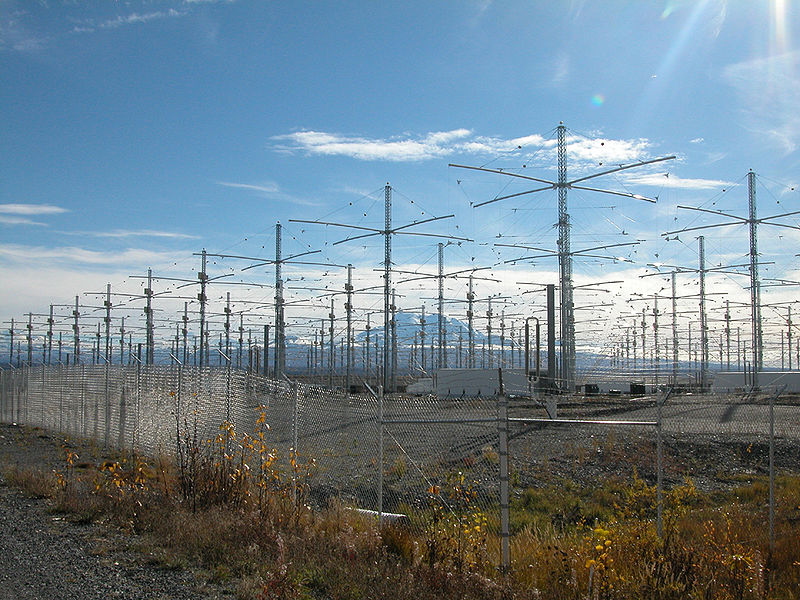 Many thanks to Chris Fallen (KL3WX), Assistant research professor in the University of Alaska Fairbanks Geophysical – Space Physics group , who shares the following update from the High Frequency Active Auroral Research Program (HAARP):
Many thanks to Chris Fallen (KL3WX), Assistant research professor in the University of Alaska Fairbanks Geophysical – Space Physics group , who shares the following update from the High Frequency Active Auroral Research Program (HAARP):
Campaign time!
Experiments begin in the mid morning 19 February Alaska Standard Time (AKST) and continue intermittently through the evening each day through 22 February.
Luxembourg Broadcast
The first radio modification of the ionosphere occurred in the early 1930s and was an accidental consequence of the new and powerful Radio Luxembourg transmitter. In certain situations, listeners of other weaker broadcast radio stations found that they sometimes heard Radio Luxembourg programming even though it was transmitted on a completely different frequency. Scientists and engineers eventually concluded that signals from powerful Radio Luxembourg and less powerful stations were being mixed in space, that is, through ionosphere modification.
HAARP will transmit a sequence of tones and music using amplitude modulation (AM) on two different radio frequencies (2.7 MHz and 3.3 MHz) in a sort of reproduction of this so-called Luxembourg Effect. If conditions are sufficient and you tune-in to one frequency or the other, you will hear tones and music from both frequencies. The tones and music have been specifically composed to take advantage of the Luxembourg effect.
The Luxembourg broadcast will begin as early as 6 p.m. on 19 and 20 February Alaska Standard Time (AKST) and conclude by 6:40 p.m. In Coordinate Universal Time (UTC), the broadcasts will begin as early as 03:00 on 20 and 21 February and conclude by 03:40. Tune in to 2.7 MHz or 3.3 MHz (2700 KHz or 3300 KHz), or both! The program is approximately 10 minutes in duration and will repeat until 6:40 p.m. AKST or 03:40 UTC.
Artificial Aurora
Aurora photographers in Alaska, Yukon Territory, and northwest British Columbia have a chance to photograph artificial aurora created with HAARP, starting immediately after the Luxembourg Broadcast and continuing until the ionosphere critical frequency over Gakona drops below about 2.7 MHz.
Radio listeners can still tune-in to these operations, but the transmissions are slightly more complex in order to test a scientific hypothesis. Also, at least in these initial experiments, the broadcast will only sound like a silent carrier wave, as if a radio DJ fell asleep and neglected to change the record (or now, more likely, the digital file). The specific transmission sequence is as follows:
MAIN: Repeat the following 480 second sequence if foF2 > 2.80 MHz
90 seconds : 2.80 MHz
30 seconds : OFF
90 seconds : 2.80 MHz, O mode, CW modulation, MZ direction
30 seconds : OFF
90 seconds : 2.82 MHz, O mode, CW modulation, MZ direction
30 seconds : OFF
90 seconds : 2.84 MHz, O mode, CW modulation, MZ direction
30 seconds : OFFBACKUP: Repeat the following 240 second sequence if foF2 < 2.80 MHz
90 seconds : 2.75 MHz
30 seconds : OFF
90 seconds : 2.75 MHz
30 seconds : OFF
Thank you, Chris.
Chris tells me that his campaigns are “strenuous chair-and-keyboard marathons” where, at times, he drives a mile or so to adjust cameras and drives back to the operations center to make adjustments there–the process being repeated many times over. I can only imagine how challenging it must be working with a site so vast.
Note that we have given Chris Fallen an account on the SWLing Post so he can directly post details about HAARP campaigns and research prior to and after events, when his time allows.



